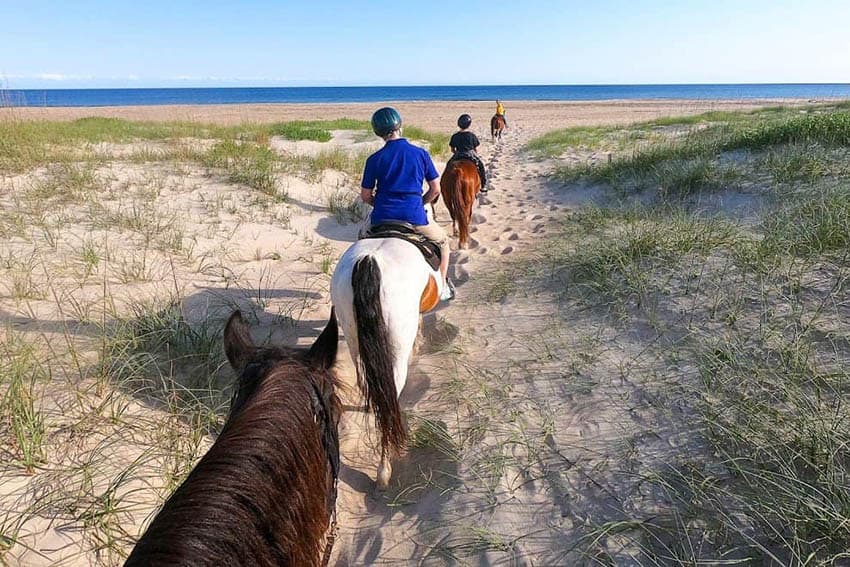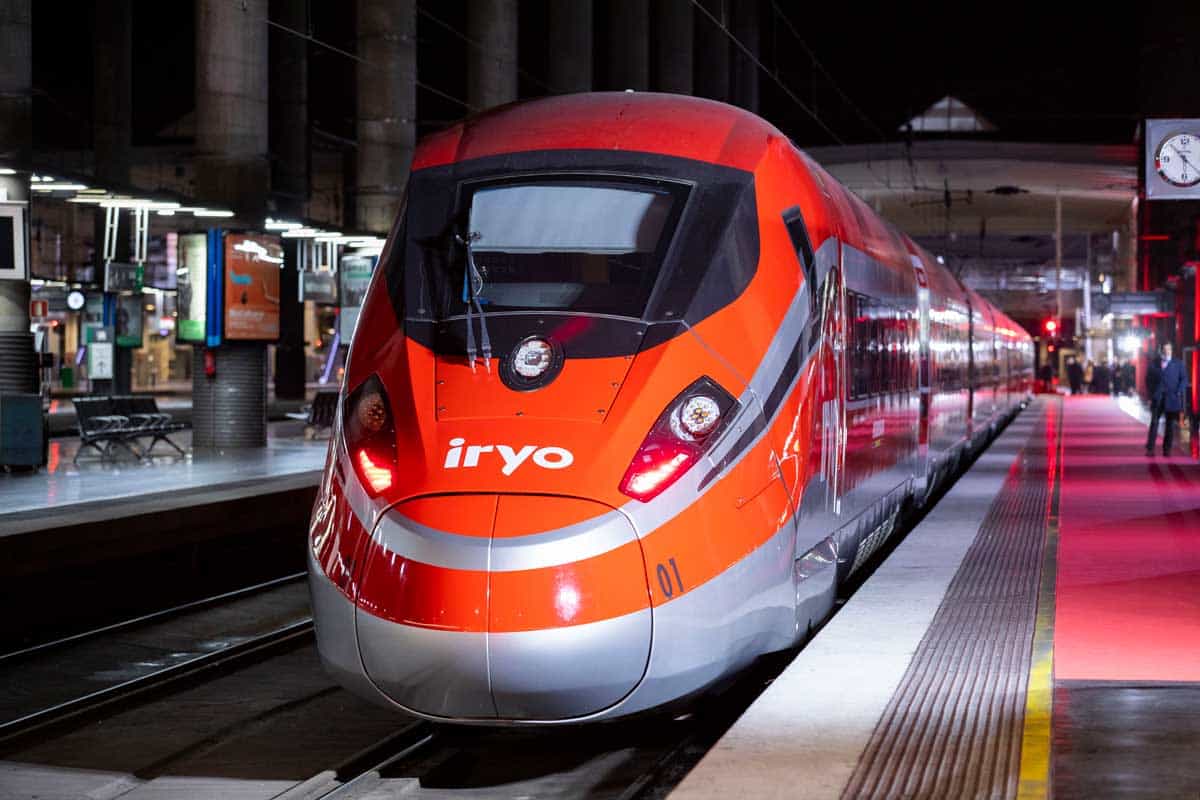
Discovering the delights of Spain
By Chance St. John
Barcelona, Valencia, Madrid… with so many deeply cultural and wildly fun cities beckoning you to experience Spain, the biggest travel difficulty becomes choosing your destination.
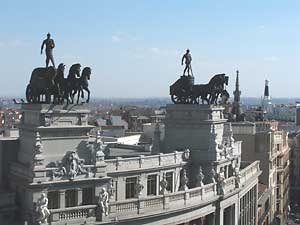
Truly though, while many areas in Spain boast sparkling beaches and undiscovered locales, Madrid is the undisputed center of the country in every sense, whether you are referring to geography, economy, or culture.
It is also the most easily accessible of the major cities in Spain due to its proximity to Madrid Barajas International Airport, Europe’s fifth biggest airport and home to a newly convenient direct flight to and from Boston.
Alcala is Calling
On your way into Madrid, try and make time to stop and visit Alcala de Henares. This quaint town will give you a pleasant introduction to the region’s many architectural and historical draws.
While there is some dispute within Spain as to the actual birthplace of Don Miguel de Cervantes, author of Don Quixote, it is generally accepted that he was born in Alcala de Henares. You can explore his origin by visiting the Museo Casa Natal de Cervantes, his first home which has been converted into a museum, or Los Universos de Cervantes, another small museum dedicated to Cervantes which exhibits written proof of his birth in the city.
However, the greatest draw of the city is the Universidad de Alcala, a university that currently houses 20,000 students in various fields. Alcala de Henares’ location within the autonomous community of Madrid and less than an hour’s drive from the Madrid city center keep it current without letting it be washed away in a tide of modernization.
Entering the Gateway of the Sun

Upon arrival in the actual city of Madrid, you may find yourself slightly overwhelmed with where to begin. After all, you are in the capital of Spain, the third largest city in the European Union (after London and Berlin), and home to more than three million inhabitants.
Depending on what time you arrive and how jetlagged you feel, you should never kick yourself too much for taking a siesta in Spain. Many of the residents will likely be adhering to a similar siesta schedule, as most of the commercial stores stay open until at least nine and the nightlife of Madrid hardly begins before midnight.
A good spot for anyone to begin their journey is Puerta del Sol, the “Gateway of the Sun”. The central square (or semicircle if you will) of Madrid and of Spain itself, the bustling city center is the location of Kilometre Zero, where Spain’s entire extensive road network originates.
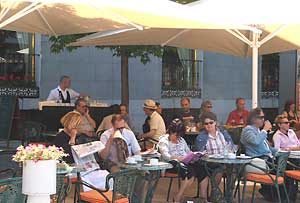
To one side you will find many architecturally impressive government buildings, and on the other side of the center fountain are a variety of commercial shops and cafes.
Overlooking the entire square from above is a classic Tio Pepe sherry sign reminiscent of some of the more historic Times Square advertisements.
Tantalizing Tapas
You may want to begin by walking around a bit and drinking in the city yourself. There is no shortage of interesting locales or exciting side streets to quench your adventurer’s thirst.
You could stop by one of the many tapas bars Spain offers for a quick drink and a snack. Tapas is a wonderfully inventive concept native to Spain where many different types of appetizer dishes ranging from simple bread and cheeses to chorizo al vino (chorizo sausage slowly cooked in wine) are combined together to form one meal.
This can either be done through a variety of small tapas dishes for a single or a couple, or an assortment of larger dishes to be shared within a more communal group.
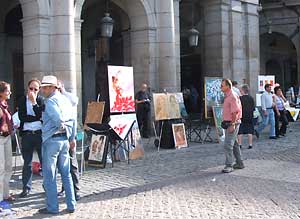
However, tapas as a full entrée is only one option available to you. Tapas actually originated as a bar food, and in many places in Madrid complimentary tapas will be given out freely with any drink you order.
Tapa translates literally to “lid” or “cover”, and the tradition of tapas began when drinks used to be covered by small plates in order to protect the drinks from fruit flies. Eventually, it became customary to place a small appetizer on the drink cover, and the rest, so they say, is history.
If you aren’t in the mood to explore the tapas bars on their own, check out Letango Tours. Offering a variety of tours in Spain and Madrid, our guide Carlos Galvin was extremely helpful and informative while exploring different tapas selections.
Two of the best that I discovered included Casa Toni (address: C/Cruz, 14) and Gonzalez (address: C/Leon 12), which unfortunately do not have websites currently, but are certainly worth finding during your visit.
After hopping around a couple tapas bars you should be well sated enough to tide you over until the more typical Spanish dinner time of between nine and midnight.
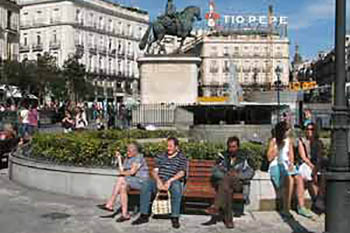
Another necessary area to check out in the daylight hours is the Plaza Mayor. If Puerta del Sol did not already occupy the lofty position, Plaza Mayor would certainly be considered the main city square. Surrounded on all sides by shops and outdoor cafes, you have an open air ceiling above you and various walking exits to different streets all around.
Beware of the shopping, as many of the local merchants are selling overpriced touristy items. Although perfect for picking up gifts for loved ones back home, better shopping is to be found around many of the streets near Puerta del Sol.
Regardless, Plaza Mayor is filled with culture and great people watching opportunities, as well as offering an excellent variety of both cheap and expensive places to settle down later at night and enjoy an outside meal.
The Lighter Side of Night
The nightlife of Madrid is incomparable, and you will find no shortage of activities at any hour of the night. Returning to my hotel my final night there around 6 am (after picking up some delicious chocolate con churros at a 24-hour café), there were still many people awake and in the streets, either finishing up their night or preparing to head out to work.

Because the nightclub scene is constantly evolving and people’s tastes are so different, it is difficult to point out any handful of individual places to go. There are packed discothèques, sizzling salsa clubs, laid-back lounges, and a thousand other options to appeal to your individual tastes.
Your best option is to either befriend some locals (Spanish culture is very inviting), or experiment through trial and error. If you don’t like one club, there are another two to either side of it.
The Chueca district, located just northeast of Puerta del Sol, is one area, in particular, to check out. Although technically known as the homosexual district, the neighborhood offers fashionable and innovative clubs fun and welcoming for homo- and heterosexuals alike.
For those interested in sports, Madrid is world-renowned both for its bullfighting and its fútbol (soccer to most Americans, but not the rest of the world), as well as hosting various other sports teams, including basketball. Real Madrid Club de Fútbol is Madrid’s premiere soccer team, honored by FIFA in 2000 as the best club of the twentieth century.
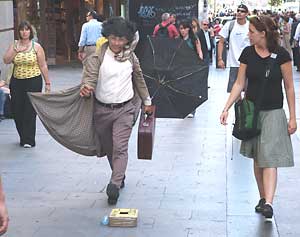
They play at the impressive Santiago Bernabéu Stadium, where you can also eat dinner with a box view of the field at one of the various stadium restaurants, such as the delightful Asador de la Esquina.
If bullfighting is an event you would like to experience, there is no better venue than Las Ventas, with mind-blowing aesthetics, a 25,000-person seating capacity, and a reputation as the bullfighting center of the world.
Try not to let personal cultural bias color your view of bullfighting, which is an indispensable aspect of Spanish culture and certainly not a black and white moral issue.
The Golden Triangle
What truly distinguishes Madrid from the rest of Spain is its deep history, culture, and love of the arts. The Palacio Real (Royal Palace) is a work of art in and of itself. Extravagantly and uniquely decorated (as an example of this uniqueness, some of the rooms are entirely embroidered instead of painted, while others are made entirely of porcelain), the massive palace was home to Spain’s beloved former king Carlos III (1716-1788).

Spain’s current king, Juan Carlos, does not actually reside within the palace, choosing instead to live in the more humble Palacio de la Zarzuela, on the edge of Madrid.
Of even greater note than the palace is Madrid’s “Golden Triangle of Art”, also known as the “Walk of the Arts.” The triangle is comprised of three museums near the center of Madrid; the Prado Museum, the Thyssen-Bornemisza Collection, and the Reina Sofia National Art Centre.
The Prado is certainly the most famous of the three, admired around the world and home to more than 8,500 different works of art. Comprehensive in its coverage of Spanish painters in particular, the museum spans the history of art and could occupy a week of your time if you let it.
A nice cultural touch is the variety of local painters and artists whom you can find replicating famous works of art from their easels within the museum.
Not to be overshadowed, the Thyssen-Bornemisza Collection occupies the neoclassical Palace of Villahermosa. With an interesting setup that takes you from the top of the museum down a circular path to the bottom, you can admire the history of art in a chronological descent from the beginning of the 13th century to the present.
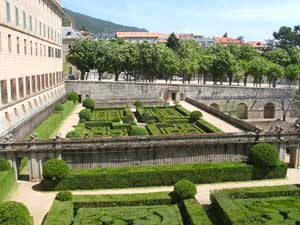
Finally, the Reina Sofia Art Centre is the location of choice for fans of contemporary art, and most famously houses Picasso’s “Guernica.”
If you are looking for a place to stay, Casa de Madrid offers an exquisite bed and breakfast experience but has only eight rooms available (doubles and singles). The uniquely decorated rooms (fashioned after different countries of the world) and central location offer the best Madrid accommodations you can find.
For a more affordable, but also an excellent option, try the Petit Palace Alcala Torre. With a location a block away from Puerta del Sol and high-tech rooms, you will not be left wanting.
Between God and the Fallen
Although Madrid is certainly the cultural capital of Spain, it by no means has a monopoly on necessary sights to see. Two other nearby locations outside the city of Madrid that deserve your time are El Escorial and the Valley of the Fallen.
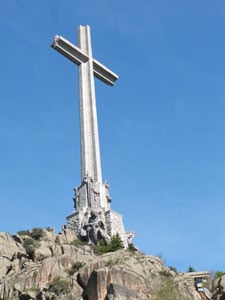
Monasterio de El Escorial is an imposing and unadorned monastery located in the town of Escorial that once served a dual role as a royal palace and Hieronymite monastery. Its plain style, massive size, and the distinguishing characteristic of acting as a mausoleum for the royal family give the location a severe air and palpable energy. The depth of history within the walls, combined with beautiful frescos and other works of art, make this a necessary stop.
After the monastery you can spend some time walking around the town of Escorial, and if you get hungry Los Lanceros Hotel has a wonderful restaurant offering a variety of delicious tapas.
The nearby El Valle de los Caídos (Valley of the Fallen) is a significantly more bone-chilling sight. A massive stone cross rises almost 500 feet above the peak of the valley in which it is located, an ominous reminder of Spain’s civil war and the rule of Franco. After the Spanish Civil War, Franco enslaved the losing side and forced them to construct the massive cross and corresponding burial tomb cut 800+ feet into the rock below it.
The coffins of 40,000 dead soldiers lie out of sight, but you can walk within the carved out section of the mountain to find Franco’s tomb. While most in Spain do not like to acknowledge the rule of Franco, the monument remains as a darkly intriguing reminder of the mistakes of the past.
Unfortunately, it is impossible to capture the full majesty of a city and region such as Madrid in either a week’s voyage or in the form of the written word. For that matter, it would take more than a lifetime to internalize even half of it.
Whether you’re stopping by on a voyage throughout Europe, staying for a week, or living for a year or longer, the city will always have more to offer. Madrid is a fine entrée with just the right dashes of debauchery and healthy pinches of history. With travel to Madrid becoming more convenient every day, there is only one question remaining; what are you waiting for.
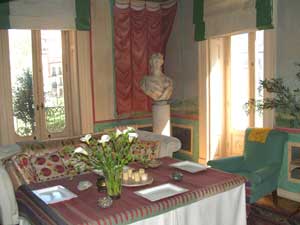
Helpful Links:
Madrid Barajas International Airport
The Golden Triangle of Art:
Prado Museum
Reina Sofia National Art Centre
Lodgings:
Petit Palace Alcala Torre
The Petite Palace offers accommodations that lean more towards the Ritz than a hostel while finding an affordable middle ground in prices.
Casa de Madrid
Casa de Madrid costs a little more but is worth every penny if you can afford it. With worldly high-classrooms, this cozy bed and breakfast beats out a hotel suite any day.
Los Lanceros Hotel
I wouldn’t bother finding accommodations in Escorial; although it is a nice town, it makes for more sense to visit from Madrid and make a day trip of it. However, the dining room at the hotel is rather impressive without being too formal, and the food was amongst the highest quality I found during my trip.
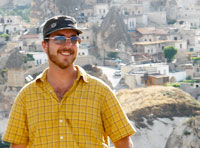 Chauncey (Chance) St. John is a Magna Cum Laude graduate of SUNY Albany. He freelances as a travel writer while preparing to join the Peace Corps and currently works with GE as a financial analyst.
Chauncey (Chance) St. John is a Magna Cum Laude graduate of SUNY Albany. He freelances as a travel writer while preparing to join the Peace Corps and currently works with GE as a financial analyst.
Read more GoNOMAD stories by Chance St. John:
Intrepid Istanbul: Family Dinners and Fortunetelling
The Dominican Republic: Tropical Terrains and Pristine Beaches
- These 9 U.S. National Parks Require Reservations in 2024 - April 17, 2024
- Take a Hike in Olympic National Park - April 17, 2024
- The Wild Mississippi: 2340 Miles Across Ten States - April 8, 2024


